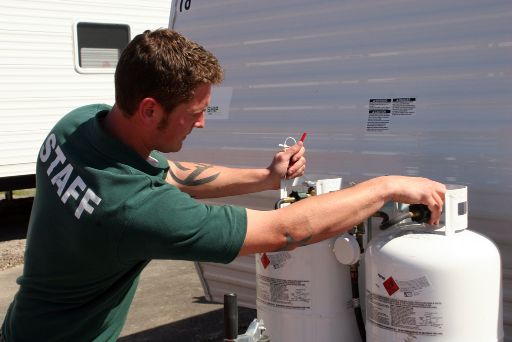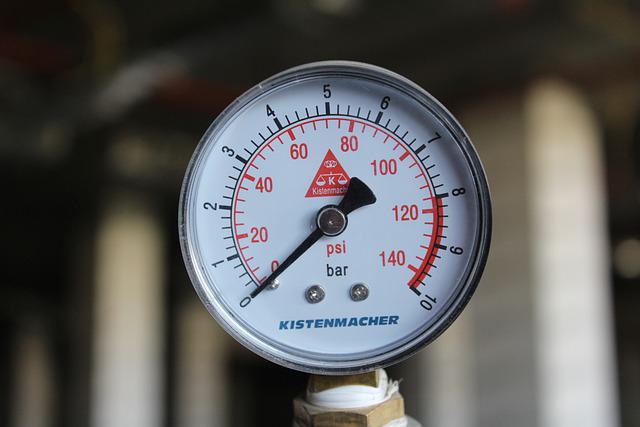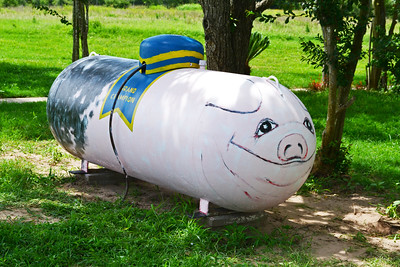
Have you wondered why propane tanks get cold when used? in this article, we are going to discuss the reason for this. Anyway, here’s the complete answer about that phenomenon. Read on…
Propane is a hydrocarbon gas that is commonly used as a fuel for heating, cooking, and powering various appliances. It is stored in tanks under pressure and is released as a gas when it is needed for use. One of the characteristics of propane is that it can get very cold when it is used, especially when the tank is nearly empty. This phenomenon is known as the Joule-Thomson effect or the throttling process.
The Joule-Thomson effect is a physical process that occurs when a gas is allowed to expand through a small opening or valve. As the gas expands, its molecules spread out, which reduces the energy and temperature of the gas. This process is similar to how a bicycle tire becomes colder when it is rapidly deflated.
The cooling effect of the Joule-Thomson effect is more pronounced in propane tanks because the gas is stored under high pressure. When the gas is released from the tank, it expands rapidly, which causes it to cool down significantly. The cooling effect is also more noticeable when the tank is nearly empty because there is more space for the gas to expand into.
The cooling of the propane tank is not a cause for concern and is simply a natural consequence of the gas expanding as it is used. In fact, the cooling of the tank can actually be beneficial, as it helps to prevent the tank from overheating and potentially rupturing.
The cooling effect of the Joule-Thomson effect can be increased by attaching a regulator to the propane tank. A regulator is a device that controls the flow of gas and allows it to expand more slowly, further cooling the gas as it is released. This can be especially useful in applications where the gas is being used for cooking or other high-temperature applications, as it helps to prevent the gas from getting too hot and potentially causing a fire.
Propane tanks get cold when used due to the Joule-Thomson effect, which is a natural consequence of the gas expanding as it is released from the tank. The cooling effect is more pronounced when the tank is nearly empty, and can be increased by attaching a regulator to the tank. The cooling of the propane tank is not a cause for concern and is simply a natural part of the process of using propane as a fuel.
Read related article: Which Propane Company is the Cheapest?
Evaporation Removes Heat is the Simple Reason Why Propane Tanks Get Cold When Used
When propane is stored in a tank, it is in a liquid form. As the liquid propane is used, it evaporates, turning into a gas. The process of evaporation removes heat from the surrounding environment and cools the remaining liquid propane. This cooling effect can be particularly pronounced when the tank is nearly empty, as there is less liquid propane left to absorb the heat.
In addition to the cooling effect of evaporation, propane tanks can also get cold due to the Joule-Thomson effect, which occurs when a gas is allowed to expand through a small opening or valve. As the gas expands, its molecules spread out, which reduces the energy and temperature of the gas. This process is more pronounced in propane tanks because the gas is stored under high pressure, and the cooling effect is more noticeable when the tank is nearly empty.
The cooling of the propane tank is not a cause for concern, and is simply a natural part of the process of using propane as a fuel. In fact, the cooling of the tank can actually be beneficial, as it helps to prevent the tank from overheating and potentially rupturing.
Read related article: When is a Propane Tank Considered Abandoned?
How Cold is the Propane in a Tank?
The temperature of the propane in a tank depends on a number of factors, including the pressure inside the tank, the ambient temperature, and the amount of propane remaining in the tank.
Propane is stored in a tank as a liquid, and the temperature of the liquid can vary depending on the pressure inside the tank. At normal atmospheric pressure, the boiling point of propane is -44 degrees Fahrenheit (-42 degrees Celsius). However, propane tanks are designed to store the liquid under high pressure, typically around 100-150 psi. This increases the boiling point of the propane, so the liquid can be stored at a higher temperature without vaporizing.
The ambient temperature also affects the temperature of the propane in the tank. If the ambient temperature is high, the propane in the tank will be warmer, and if the ambient temperature is low, the propane will be cooler.
Finally, the amount of propane remaining in the tank can also affect the temperature. As the propane is used, the remaining liquid will cool down due to the process of evaporation, which removes heat from the surrounding environment. This cooling effect can be particularly pronounced when the tank is nearly empty, as there is less liquid propane left to absorb the heat.
The temperature of the propane in a tank will be cooler than the ambient temperature, but the exact temperature will depend on the specific conditions.
Read related article: How to Choose the Best Propane Tank for Your Needs?
What Affects How Cold Propane Tanks Get
- How Quickly You Use Propane:
- When you use propane fast, the liquid propane inside the tank turns into gas quicker. This change from liquid to gas needs heat, and it pulls this heat from the propane itself and the tank. So, the more propane you use at once, the colder the tank will become. It’s like when you spray a deodorant for a long time, and the can gets cold. This happens because the propane is using the tank’s heat to turn into gas.
- The Weather Around the Tank:
- The temperature of the air around the tank also plays a role. On a hot day, the tank may not feel as cold because the warm air outside helps to keep the temperature up. On a cold day, however, the tank can get even colder because the surrounding air isn’t providing much heat. Think of it like how a cold drink gets colder in a freezer than in a fridge.
- How the Tank is Built and Protected:
- The design of the tank, including its material and thickness, can influence how it reacts to temperature changes. Thicker and better-insulated tanks might not get as cold as quickly because they can hold onto their heat better. It’s similar to wearing a thick jacket in winter; it keeps you warmer than a thin one. Insulation acts like a barrier, slowing down the transfer of heat from the tank to the outside air, which helps in controlling how quickly the tank gets cold.
How Do Temperature Changes Affect Propane?
Temperature changes can affect propane in a number of ways. Here are a few examples:
- Boiling point: The boiling point of propane is -44 degrees Fahrenheit (-42 degrees Celsius) at normal atmospheric pressure. However, propane is typically stored in tanks under high pressure, which increases the boiling point of the liquid. As the temperature increases, the pressure inside the tank will also increase, which can cause the propane to boil and turn into a gas. This process is known as vaporization.
- Vaporization: As the temperature of the propane in the tank increases, the rate of vaporization will also increase. This can cause the pressure inside the tank to rise, which can lead to overfilling and potentially dangerous situations if the pressure is not properly regulated.
- Freezing: If the temperature of the propane in the tank drops below its freezing point (-44 degrees Fahrenheit or -42 degrees Celsius), the liquid can begin to solidify and turn into a solid. This can cause problems with the flow of gas from the tank, as the solidified propane will not be able to pass through the regulator.
- Regulator freeze-up: The regulator is the device that controls the flow of gas from the tank. If the temperature drops significantly, the regulator can freeze up, which can prevent the gas from flowing. This can be especially problematic if the regulator is located outside, as the cold weather can cause it to freeze more easily.
In general, it is important to keep the temperature of propane tanks and the surrounding environment within a safe range to prevent problems with vaporization, freezing, and regulator freeze-up.
Keeping Propane Tanks Functioning In Cold Weather
Propane tanks can be used in cold weather, but there are some steps that should be taken to ensure that they function properly. Here are a few tips for keeping propane tanks functioning in cold weather:
- Keep the tanks full: When propane tanks are nearly empty, the liquid propane inside can cool down significantly due to the process of evaporation. To prevent this from happening, it is important to keep the tanks as full as possible during cold weather.
- Insulate the tanks: Insulating the tanks can help to keep the propane inside at a consistent temperature and prevent it from freezing. Wrapping the tanks with a blanket or using a tank jacket can be effective ways to insulate them.
- Store the tanks in a warm, sheltered location: If possible, store the tanks in a warm, sheltered location such as a garage or shed to protect them from the cold.
- Use a fuel additive: Fuel additives can help to prevent the propane from freezing, which can occur when the temperature drops below the freezing point of propane (-44 degrees Fahrenheit or -42 degrees Celsius). Fuel additives can be added to the propane before it is placed in the tank to help it remain liquid at lower temperatures.
- Keep the regulator warm: The regulator is the device that controls the flow of gas from the tank. If the regulator is cold, it can cause the gas to freeze as it flows through the regulator. To prevent this from happening, it is important to keep the regulator warm by insulating it or using a heat source.
By following these tips, you can help to ensure that your propane tanks are able to function properly in cold weather.
Practical Things to Keep in Mind with Cold Propane Tanks
- Being Careful with Cold Tanks:
- Cold propane tanks can be risky to handle. They can cause frostbite if you touch them without protection. Always wear gloves or use a cloth when handling a very cold tank.
- Using Propane Smartly in Different Weathers:
- Propane doesn’t work the same in all temperatures. In cold weather, it might not flow as well, making your heater or stove less effective. On warmer days, it works better. Knowing this can help you use your propane more smartly.
- Keeping Your Propane Tank Working Well:
- To make sure your propane tank works best, keep it in a good spot, not too hot or too cold. Also, check it regularly for any damage or leaks. This way, you can use your propane safely and efficiently.
In Conclusion
Propane tanks get cold when used due to the Joule-Thomson effect, also known as the throttling process. This occurs when a gas is allowed to expand through a small opening or valve, and is more pronounced in propane tanks because the gas is stored under high pressure. As the gas expands, its molecules spread out, which reduces the energy and temperature of the gas. The cooling effect is more pronounced when the tank is nearly empty, and can be increased by attaching a regulator to the tank, which controls the flow of gas and allows it to expand more slowly.
In addition to the Joule-Thomson effect, propane tanks can also get cold due to the process of evaporation, which removes heat from the surrounding environment and cools the remaining liquid propane. The cooling effect of evaporation is more pronounced when the tank is nearly empty, as there is less liquid propane left to absorb the heat.
Overall, the cooling of propane tanks is not a cause for concern, and is simply a natural part of the process of using propane as a fuel. It is important to keep the temperature of propane tanks and the surrounding environment within a safe range to prevent problems with vaporization, freezing, and regulator freeze-up.

Mike is an experienced propane technician with over 15 years of professional experience in the field. He has dedicated his career to helping customers with their propane needs, from installation to maintenance and repair. Together with Jeremy, he co-founded this website to provide useful information and guidance to customers seeking reliable propane services.




